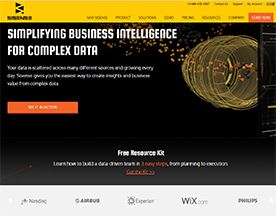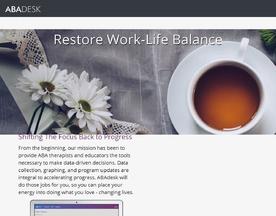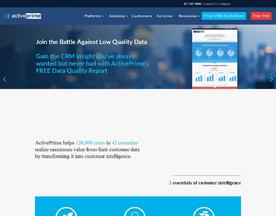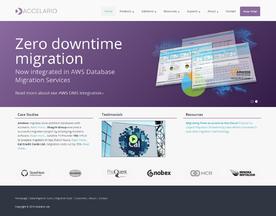What is clickstream data ? Clickstream data tracks the sequence of clicks made by visitors on a website, revealing pathways and behaviors for analytics.
Clickstream data is a type of data that provides valuable insights into user behavior on websites and other digital platforms. This data is collected by tracking the sequence of clicks made by a user during a session, providing a detailed record of their activity. This data can be used to analyze user behavior, optimize website design, and inform digital marketing strategies.

Understanding clickstream data is essential for businesses looking to improve their online presence and increase customer engagement. By analyzing this data, businesses can gain insights into user behavior, such as which pages are most popular, how long users spend on each page, and where they exit the website. This information can be used to optimize website design and improve the user experience, ultimately leading to increased customer engagement and revenue.
Key Takeaways:
- Clickstream data provides valuable insights into user behavior on websites and other digital platforms.
- Analyzing this data can help businesses optimize website design and improve the user experience.
- Clickstream data is an important tool for digital marketing and can inform strategies for increasing customer engagement and revenue.
Understanding Clickstream Data
Definition and Importance
Clickstream data refers to the record of a user’s activity on a website or application. It includes the sequence of pages visited, the time spent on each page, and the actions taken, such as clicks and form submissions. This type of data is essential for businesses to understand user behavior and improve their website’s user experience.
Clickstream data can provide insights into user preferences, interests, and needs. By analyzing This data, businesses can identify which pages are most popular, which pages have high bounce rates, and which pages have the highest conversion rates. This information can be used to optimize website design, improve navigation, and increase conversion rates.
Components of Clickstream Data
Clickstream data is composed of several components, including the session, URL, timestamp, user ID, session ID, and referrer URL. The session refers to the period of time a user spends on a website or application. The URL is the address of the web page visited, while the timestamp records the time and date of the visit.
The user ID and session ID are unique identifiers assigned to each user and session, respectively. These identifiers allow businesses to track individual user behavior and analyze patterns over time. The referrer URL records the website or page that directed the user to the current page.
Sources of Clickstream Data
Clickstream data can be collected from a variety of sources, including web analytics tools, server logs, and third-party tracking services. Web analytics tools, such as Google Analytics, provide businesses with detailed information about user behavior on their website. Server logs record every request made to a server, including page views and clicks. Third-party tracking services, such as AdRoll, allow businesses to track user behavior across multiple websites and applications.
To learn more about clickstream data and its importance for businesses, check out this article by Forbes Agency Council.
Clickstream Data Collection and Storage

Methods of Data Collection
Clickstream data is a valuable source of information for businesses looking to understand their customers’ behavior online. Data collection methods for this data include web analytics tools, tracking codes, and browser cookies. Web analytics tools such as Google Analytics and Adobe Analytics allow businesses to track user behavior on their website, including page views, clicks, and time spent on site. Tracking codes can be embedded in website URLs to track specific campaigns or traffic sources. Browser cookies are small text files that are stored on a user’s computer and can be used to track their activity across multiple websites.
Data Storage Solutions
Clickstream data can be stored in a data warehouse, which is a large repository of data that can be accessed and analyzed by businesses. Data warehouses can be used to store both first-party data, which is collected directly by the business, and third-party data, which is purchased from external sources. Cloud-based data storage solutions such as Amazon Web Services and Microsoft Azure provide businesses with scalable and cost-effective options for storing and analyzing this data.
When it comes to data storage solutions, businesses must consider factors such as data security, compliance with data privacy regulations, and the ability to integrate with other tools and systems. This data can contain personally identifiable information (PII), which must be protected to comply with regulations such as the General Data Protection Regulation (GDPR) and the California Consumer Privacy Act (CCPA).
For more information on clickstream data collection and storage, check out this article, which provides a comprehensive overview of the topic.
Analyzing Clickstream Data
Clickstream data analysis is a crucial component of any web analytics strategy. It involves the collection, processing, and interpretation of user interaction data with a website or application. This data can provide valuable insights into user behavior, preferences, and needs, which can be used to optimize the user experience, increase engagement, and improve conversion rates.
Clickstream Data Analysis Techniques
There are several techniques used for analyzing clickstream data, including:
- Sessionization: grouping user interactions into sessions to identify patterns and trends in user behavior.
- Path analysis: analyzing the sequence of pages or events that users follow to identify common paths and drop-off points.
- Segmentation: dividing users into groups based on common characteristics or behaviors to identify trends and patterns.
- Funnel analysis: tracking user behavior through a predefined series of steps to identify areas for improvement in the user journey.
Tools for Clickstream Analysis
There are a variety of analytics tools available for analyzing clickstream data, ranging from simple web analytics tools to complex data science platforms. Some popular options include:
- Google Analytics: a free web analytics tool that provides basic data analysis capabilities.
- Adobe Analytics: a more advanced web analytics tool that provides advanced segmentation and path analysis capabilities.
- Mixpanel: a product analytics platform that focuses on user behavior and engagement analysis.
Interpreting Clickstream Analytics
Interpreting clickstream analytics requires a deep understanding of user behavior and the context in which it occurs. Some key metrics to consider when analyzing clickstream data include:
- Bounce rate: the percentage of users who leave a website after viewing only one page.
- Conversion rate: the percentage of users who complete a desired action, such as making a purchase or filling out a form.
- Time on site: the average amount of time users spend on a website.
To make sense of these metrics, it’s important to consider the user’s intent, the context of their visit, and the overall goals of the website or application.
Clickstream data analysis is a powerful tool for understanding user behavior and optimizing the user experience. By using the right techniques and tools, and interpreting the data correctly, businesses can gain valuable insights into user needs and preferences, and make data-driven decisions to improve their online presence.
Here is a great resource for learning more about clickstream data analysis.
Applications of Clickstream Analysis
Clickstream analysis is a powerful tool that can be used to gain insights into user behavior on websites. By analyzing the data generated by users as they navigate through a website, businesses can gain valuable insights into how users interact with their site. Here are some of the key applications of clickstream analysis:
Enhancing User Experience
One of the primary benefits of clickstream analysis is that it can be used to enhance the user experience on a website. By analyzing how users navigate through a site, businesses can identify areas where users may be experiencing frustration or confusion. This can help businesses make changes to their site to improve the user experience.
For example, if clickstream data shows that users are frequently abandoning their shopping carts on a particular page, businesses can investigate why this is happening and make changes to that page to make it more user-friendly.
Optimizing Conversion Rates
Clickstream analysis can also be used to optimize conversion rates. By analyzing how users interact with a site, businesses can identify areas where users are dropping off and make changes to those areas to improve conversion rates.
For example, if clickstream data shows that users are frequently abandoning their shopping carts on a particular page, businesses can make changes to that page to make it more compelling and increase the likelihood that users will complete their purchase.
Personalization and Recommendations
Clickstream analysis can also be used to personalize the user experience and make recommendations to users based on their behavior on a site. By analyzing this data, businesses can gain insights into users’ interests and preferences and use that information to make personalized recommendations.
For example, if clickstream data shows that a user frequently visits pages related to a particular product category, businesses can use that information to make personalized recommendations for products in that category.
Market Research and Competitor Analysis
Finally, clickstream analysis can be used for market research and competitor analysis. By analyzing clickstream data from their own site and from competitors’ sites, businesses can gain insights into user behavior and preferences.
For example, businesses can use this data to identify which products are most popular among users and which features are most important to them. They can also use this data to compare their own site to competitors’ sites and identify areas where they may be falling behind.
Overall, clickstream analysis is a powerful tool that can provide valuable insights into user behavior on websites. By using clickstream data to enhance the user experience, optimize conversion rates, personalize the user experience, and conduct market research and competitor analysis, businesses can gain a competitive edge in today’s digital marketplace.
Here is a link to an external resource that provides more information on clickstream analysis.
Clickstream Data in Digital Marketing

Clickstream data refers to the trail of clicks made by a user while browsing a website. This data provides valuable insights into user behavior, which can be leveraged by digital marketers to optimize their campaigns and enhance their marketing strategies.
Influence on Marketing Strategies
Clickstream data can be used to gain a better understanding of user behavior and preferences. This data can be used to optimize marketing campaigns, tailor messaging, and improve user experience on a website. By analyzing this data, marketers can identify patterns and trends in user behavior, which can help them make more informed decisions about their marketing strategies.
Tracking Marketing Campaigns
Clickstream data can also be used to track the effectiveness of marketing campaigns. By monitoring this data, marketers can determine which campaigns are driving the most traffic to their website and which are not. This information can be used to refine marketing strategies and improve ROI.
SEO and Clickstream Data
Clickstream data can also be used to improve search engine optimization (SEO) efforts. By analyzing this data, marketers can gain insights into the keywords and phrases that are driving traffic to their website. This information can be used to optimize content and improve search engine rankings.
Overall, clickstream data provides valuable insights that can be leveraged by digital marketers to optimize their campaigns and improve their marketing strategies. By analyzing this data, marketers can gain a better understanding of user behavior and preferences, track the effectiveness of their marketing campaigns, and improve their SEO efforts.
For more information on clickstream data and its applications in digital marketing, visit this resource, which provides a comprehensive overview of the topic.
Challenges and Considerations

Data Privacy and Security
Clickstream data can contain sensitive information about users, such as their browsing history, search queries, and online behavior. Therefore, it is crucial to ensure that this data is collected and stored securely to protect the privacy of users. Companies must comply with various data privacy regulations, such as the General Data Protection Regulation (GDPR) and the California Consumer Privacy Act (CCPA), to avoid legal consequences and maintain the trust of their users.
Moreover, companies must also take measures to prevent data breaches and unauthorized access to this data. This includes implementing strong security protocols, such as encryption and access controls, and regularly monitoring and auditing their systems for vulnerabilities and threats. For more information on clickstream data privacy and security, visit this resource.
Accuracy and Reliability of Data
Clickstream data can provide valuable insights into user behavior and preferences, but it is important to ensure that the data is accurate and reliable. Inaccurate or incomplete data can lead to incorrect conclusions and decisions, which can harm a company’s reputation and bottom line.
One of the main challenges in ensuring the accuracy and reliability of this data is dealing with bots and other non-human traffic. Bots can skew the data by generating fake clicks and visits, which can lead to inaccurate metrics and analytics. To address this issue, companies can use various techniques, such as IP filtering and user agent analysis, to identify and filter out bot traffic.
Ethical Use of Clickstream Data
Clickstream data can be a powerful tool for companies to improve their products and services, but it is important to use this data ethically and responsibly. Companies must respect the privacy and autonomy of their users and avoid using this data for nefarious purposes, such as targeted advertising or manipulation.
One of the main ethical considerations in using clickstream data is obtaining informed consent from users. Users must be aware of what data is being collected, how it is being used, and who has access to it. Companies must also provide users with the option to opt-out of data collection and use.
In conclusion, clickstream data presents various challenges and considerations for companies to navigate, including data privacy and security, accuracy and reliability of data, and ethical use. By addressing these challenges and considerations, companies can leverage this data to improve their products and services while maintaining the trust and respect of their users.
Future of Clickstream Data

As technology continues to evolve, so does the importance of clickstream data. The future of clickstream data is bright and it is expected to play a major role in shaping the way businesses operate. In this section, we will explore the emerging trends in clickstream analysis and the advancements in analytics technologies.
Emerging Trends in Clickstream Analysis
Clickstream data provides businesses with valuable insights into user behavior, preferences, and trends. One emerging trend in clickstream analysis is the use of machine learning algorithms to analyze clickstream data. This allows businesses to identify patterns and trends that would be difficult to detect using traditional data analysis techniques.
Another trend is the use of clickstream data to personalize user experiences. By analyzing clickstream data, businesses can gain a better understanding of their customers and tailor their products and services to meet their specific needs.
Advancements in Analytics Technologies
Advancements in analytics technologies have made it easier for businesses to collect and analyze clickstream data. Big data technologies such as Hadoop and Spark have made it possible to process large volumes of clickstream data quickly and efficiently.
In addition, advancements in artificial intelligence and natural language processing have made it possible to extract insights from unstructured data such as clickstream data. This has opened up new opportunities for businesses to gain valuable insights into user behavior and preferences.
Overall, the future of clickstream data looks promising. As technology continues to evolve, businesses will have access to more advanced analytics tools and techniques that will enable them to gain even deeper insights into user behavior and preferences.
Here is an article from Forbes that explores the future of clickstream data and why it matters.
Frequently Asked Questions

What are the common uses of clickstream data in analytics?
Clickstream data is used in a variety of ways in analytics. One common use is to track user behavior on a website or application. This data can be used to optimize the user experience, improve conversion rates, and identify areas for improvement. Clickstream data can also be used for market research, competitive analysis, and trend analysis.
What tools are available for analyzing clickstream data?
There are several tools available for analyzing clickstream data. Some popular options include Google Analytics, Adobe Analytics, and Mixpanel. These tools offer a range of features, including real-time tracking, custom reporting, and data visualization.
How can clickstream data be collected effectively?
Clickstream data can be collected effectively by using tracking codes or cookies on a website or application. These codes or cookies can be used to track user behavior, such as page views, clicks, and time spent on a page. It is important to ensure that the data collected is accurate and reliable, and that user privacy is respected.
In what ways is clickstream data utilized for improving user experience?
Clickstream data can be used to improve user experience in several ways. For example, it can be used to identify areas of a website or application that are causing frustration or confusion for users. This data can then be used to make improvements, such as simplifying navigation or improving page load times. Clickstream data can also be used to personalize the user experience, such as by recommending products or content based on user behavior.
What are the typical costs associated with clickstream data analysis?
The costs associated with clickstream data analysis can vary depending on the tools and services used. Some tools, such as Google Analytics, offer a free version with limited features. Other tools may require a subscription or a one-time fee. Additionally, the cost of data storage and processing should be taken into account.
How is clickstream data integrated with other data sources for comprehensive insights?
Clickstream data can be integrated with other data sources, such as customer relationship management (CRM) data or social media data, to provide a more comprehensive view of user behavior. This can help businesses to identify patterns and trends, and make more informed decisions. One example of a tool that allows for this type of integration is Tableau.
For more information on clickstream data and its uses, click here.














